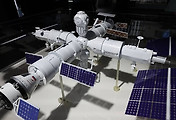
Hanwha Systems has secured a contract worth 40.5 billion KRW to develop miniature hyperspectral satellites, aiming to strengthen greenhouse gas monitoring.
This project, overseen by the National Institute of Environmental Research, aims to develop and supply a total of five satellites by 2028.
Hyperspectral technology divides light into hundreds of bands to create images, allowing detailed analysis of distant objects.
This technology is used in various fields such as air and soil pollution monitoring, disaster detection, crop yield analysis, and forest pest identification.
The satellites developed by Hanwha Systems will operate in low Earth orbit to calculate the emissions and measure the distribution of greenhouse gases such as methane and carbon dioxide, monitoring areas with high emission risks.
This project marks Hanwha Systems' first venture into the hyperspectral satellite market, positioning the company as the only domestic firm with comprehensive Earth observation satellite technology capabilities.
The satellite development schedule includes the launch of the first satellite in the first half of 2027, followed by the simultaneous launch of the remaining four satellites in the first half of 2028.
Hanwha Systems will be responsible for the entire process, from the development of the satellite body and payload to launch and operational support.
출처 : 산경투데이(https://www.sankyungtoday.com)
https://www.sankyungtoday.com/news/articleView.html?idxno=46852
Hanwha Systems Strengthens Greenhouse Gas Monitoring with Hyperspectral Satellite Development
Hanwha Systems has secured a contract worth 40.5 billion KRW to develop miniature hyperspectral satellites, aiming to strengthen greenhouse gas monitoring.This
www.sankyungtoday.com



